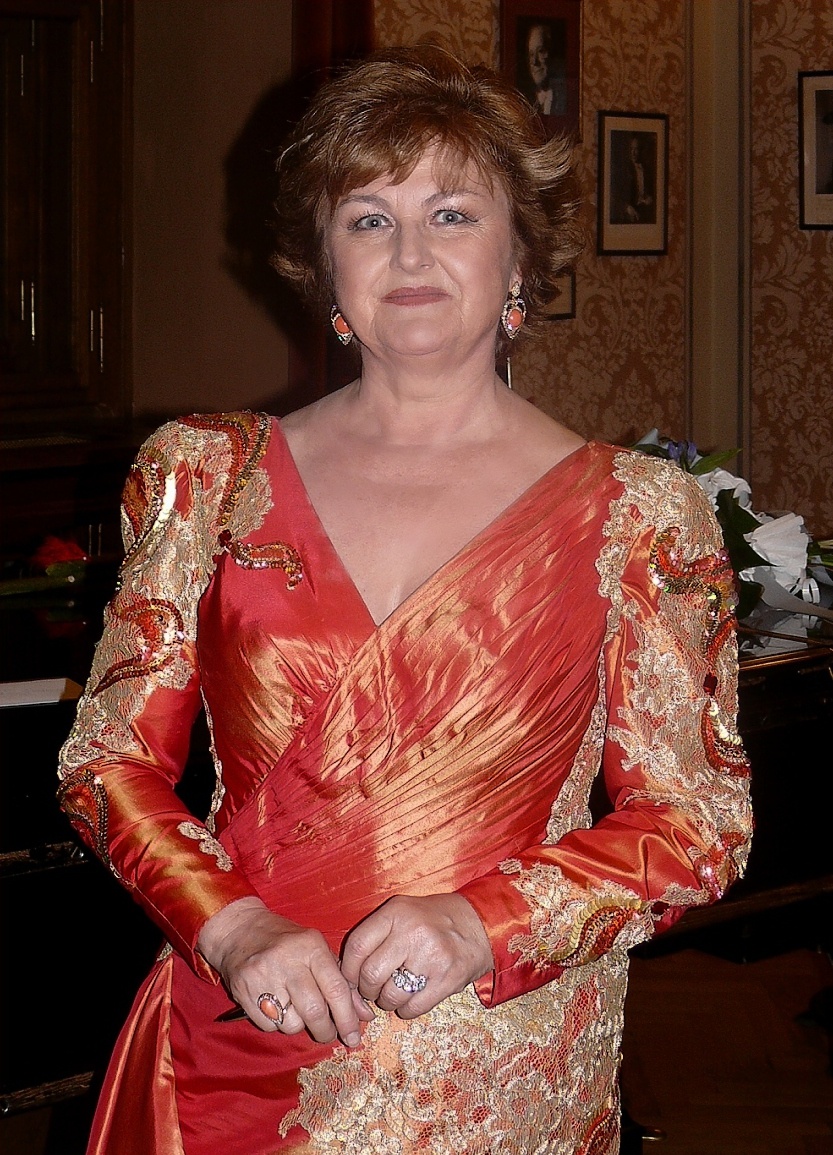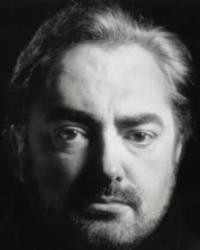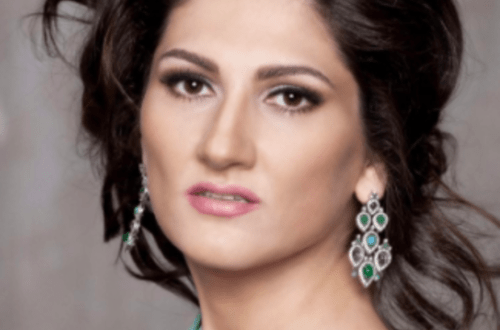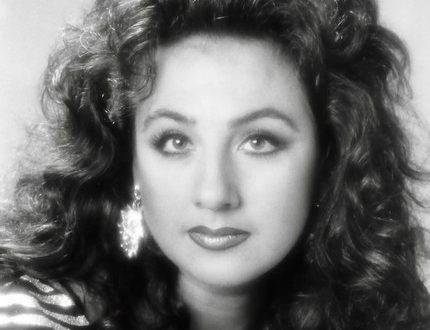
Edita Gruberova |
Edita Gruberová
Edita Gruberova, one of the first coloratura sopranos in the world, is well known not only in Europe, but also in Russia, though in the latter mainly from CDs and video cassettes. Gruberova is a virtuoso of coloratura singing: her trills can only be compared with those of Joan Sutherland, in her passages every note seems like a pearl, her high notes give the impression of something supernatural. Giancarlo Landini is talking to the famous singer.
How did Edita Gruberova start?
From the Queen of the Night. I made my debut in this role in Vienna and sang it all over the world, for example, at the Metropolitan Opera in New York. As a result, I realized that you can’t make a big career on the Queen of the Night. Why? Don’t know! Maybe my ultra-high notes weren’t good enough. Maybe young singers can’t play this role well, which is actually much more difficult than they think. The Queen of the Night is a mother, and her second aria is one of the most dramatic pages ever written by Mozart. Young people are unable to express this drama. We must not forget that, except for the overly high notes, two of Mozart’s arias are written in the central tessitura, the real tessitura of a dramatic soprano. Only after I sang this part for twenty years, I was able to properly express its content, to perform Mozart’s music at the appropriate level.
Your significant conquest is that you have acquired the most expressiveness in the central zone of the voice?
Yes, I must say yes. It’s always been easy for me to hit ultra-high notes. Since the days of the conservatory, I have conquered high notes, as if it cost me nothing. My teacher immediately said that I was a coloratura soprano. The high setting of my voice was completely natural. While the central register I had to conquer and work on its expressiveness. All this came in the process of creative maturation.
How did your career continue?
After the Queen of the Night, a meeting of great importance took place in my life – with Zerbinetta from Ariadne auf Naxos. In order to embody this amazing figure of the theater of Richard Strauss, it also took me a long way to go. In 1976, when I sang this part under Karl Böhm, my voice was very fresh. Today it is still a perfect instrument, but over the years I have learned to focus on each individual note in order to extract from it maximum expressiveness, dramatic power and penetration. I learned how to build sound properly, how to find a foothold that guarantees the quality of my voice, but most importantly, with the help of all these discoveries, I learned how to express drama more deeply.
What would be dangerous for your voice?
If I sang “Jenufa” by Janacek, which I love very much, it would be dangerous for my voice. If I sang Desdemona, it would be dangerous for my voice. If I sang Butterfly, it would be dangerous for my voice. Woe to me if I allowed myself to be seduced by a character like Butterfly and decided to sing it at any cost.
Many parts in Donizetti’s operas are written in the central tessitura (suffice it to recall Anne Boleyn, which the Bergamo master had in mind the voice of Giuditta Pasta). Why doesn’t their tessitura harm your voice, while Butterfly would destroy it?
Madama Butterfly’s voice sounds against the background of an orchestra that is fundamentally different from Donizetti’s. The relationship between voice and orchestra changes the requirements that are placed on the voice itself. In the first decades of the nineteenth century, the goal of the orchestra was not to interfere with the voice, to emphasize its most advantageous sides. In Puccini’s music, there is a confrontation between the voice and the orchestra. The voice must be strained to overcome the orchestra. And stress is very dangerous for me. Everyone should sing in a natural way, not demanding from his voice what he cannot give, or what he cannot give for a long time. In any case, it must be admitted that too deep a search in the field of expressiveness, coloring, accents is like a mine planted under the vocal material. However, up to Donizetti, the necessary colors do not endanger the vocal material. If I were to take it into my head to expand my repertoire to Verdi, danger might arise. In this case, the problem is not with the notes. I have all the notes, and I sing them with ease. But if I decided to sing not only Amelia’s aria “Carlo vive”, but the entire opera “The Robbers”, it would be very dangerous. And if there is a problem with the voice, what to do?
The voice can no longer be “repaired”?
No, once the voice has been harmed, it is very difficult, if not impossible, to fix it.
In recent years you have often sung in Donizetti’s operas. Mary Stuart, recorded by Philips, was followed by recordings of the parts of Anne Boleyn, Elizabeth in Robert Devere, Maria di Rogan. The program of one of the solo discs includes an aria from Lucrezia Borgia. Which of these characters best suits your voice?
All Donizetti characters suit me. Of some operas, I recorded only arias, which means that I would not be interested in performing these operas in their entirety. In Caterina Cornaro, the tessitura is too central; Rosemond English does not interest me. My choice is always dictated by the drama. In “Robert Devere” the figure of Elizabeth is amazing. Her meeting with Robert and Sarah is truly theatrical and therefore cannot fail to attract the prima donna. Who wouldn’t be seduced by such an intriguing heroine? There is a lot of great music in Maria di Rogan. It is a pity that this opera is so little known compared to other Donizetti titles. All these different operas have one feature that unites them. The parts of the main characters are written in the central tessitura. Nobody bothers to sing variations or cadences, but the central voice register is mainly used. This category also includes Lucia, who is usually considered very tall. Donizetti did not strive for coloratura, but was looking for expressiveness of the voice, looking for dramatic characters with strong feelings. Among the heroines with whom I have not yet met, because their story does not win me over like the stories of others, is Lucrezia Borgia.
What criterion do you use when choosing variations in the aria “O luce di quest’anima”? Do you turn to tradition, rely only on yourself, listen to recordings of famous virtuosos of the past?
I would say that I follow all the paths you mentioned. When you learn a part, you usually follow the tradition that comes to you from the teachers. We must not forget the importance of cadenzas, which were used by the great virtuosos and which were passed down to the descendants from the Ricci brothers. Of course, I listen to the recordings of the great singers of the past. In the end, my choice is free, something of mine is added to the tradition. It is very important, however, that the basis, that is, the music of Donizetti, does not disappear under the variations. The relationship between the variations and the music of the opera must remain natural. Otherwise, the spirit of the aria disappears. From time to time Joan Sutherland sang variations that had nothing to do with the taste and style of the opera being performed. I don’t agree with this. Style must always be respected.
Let’s go back to the beginning of your career. So, you sang the Queen of the Night, Zerbinetta, and then?
Then Lucia. The first time I performed in this role was in 1978 in Vienna. My teacher told me that it was too early for me to sing Lucia and that I had to move forward with caution. The maturation process should go smoothly.
What does it take for an incarnate character to reach maturity?
One must sing the part intelligently, not perform too much in large theaters where the halls are too spacious, which creates difficulties for the voice. And you need a conductor who understands the problems of the voice. Here is a name for all time: Giuseppe Patane. He was the conductor who knew best how to create comfortable conditions for the voice.
Does the score have to be played as written, or is some kind of intervention necessary?
I think an intervention is needed. For example, the choice of pace. There is no absolute right pace. They have to be chosen every time. The voice itself tells me what and how I can do. Therefore, tempos can change from performance to performance, from one singer to another. To adjust the pace is not to satisfy the whims of the prima donna. It means getting the best dramatic result out of the voice at your disposal. Ignoring the problem of pace can lead to negative results.
What is the reason in recent years you have entrusted your art to a small record company, and not the famous giants?
The reason is very simple. The major record labels showed no interest in the titles that I wanted to record and which, as a result, were favorably received by the public. The publication of “Maria di Rogan” aroused great interest.
Where can you be heard?
Basically, I limit my activities to three theaters: in Zurich, Munich and Vienna. There I make an appointment with all my fans.
Interview with Edita Gruberova published in l’opera magazine, Milan
PS An interview with the singer, who can now be called great, was published several years ago. By sheer chance, the translator over the past few days heard a live broadcast of Lucrezia Borgia from the Staats Oper in Vienna with Edita Gruberova in the lead role. It is difficult to describe the surprise and admiration: the 64-year-old singer is in good shape. The Viennese public received her enthusiastically. In Italy, Gruberova in her current state would have been treated more severely and, most likely, they would have said that “she is no longer the same as before.” However, common sense dictates that this is simply not possible. These days Edita Gruberova celebrated her XNUMXth career anniversary. There are few singers who, at her age, can boast of pearl coloratura and the amazing art of thinning ultra-high notes. This is exactly what Gruberova demonstrated in Vienna. So she is a real diva. And, perhaps, indeed the last (I.S.).
Debut 1968 (Bratislava, part of Rozina). Since 1970 at the Vienna Opera (Queen of the Night, etc.). She has performed with Karajan at the Salzburg Festival since 1974. Since 1977 at the Metropolitan Opera (debut as Queen of the Night). In 1984, she brilliantly sang the role of Juliet in Bellini’s Capuleti e Montecchi at Covent Garden. She performed at La Scala (part of Constanza in Mozart’s Abduction from the Seraglio, etc.).
Among the performances of the last years of the role of Violetta (1992, Venice), Anne Boleyn in the opera of the same name by Donizetti (1995, Munich). Among the best roles are also Lucia, Elvira in Bellini’s The Puritans, Zerbinetta in Ariadne auf Naxos by R. Strauss. She recorded a number of roles in operas by Donizetti, Mozart, R. Strauss and others. She starred in opera films. Of the recordings, we note the parts of Violetta (conductor Rizzi, Teldec), Zerbinetta (conductor Böhm, Deutsche Grammophon).
E. Tsodokov, 1999





